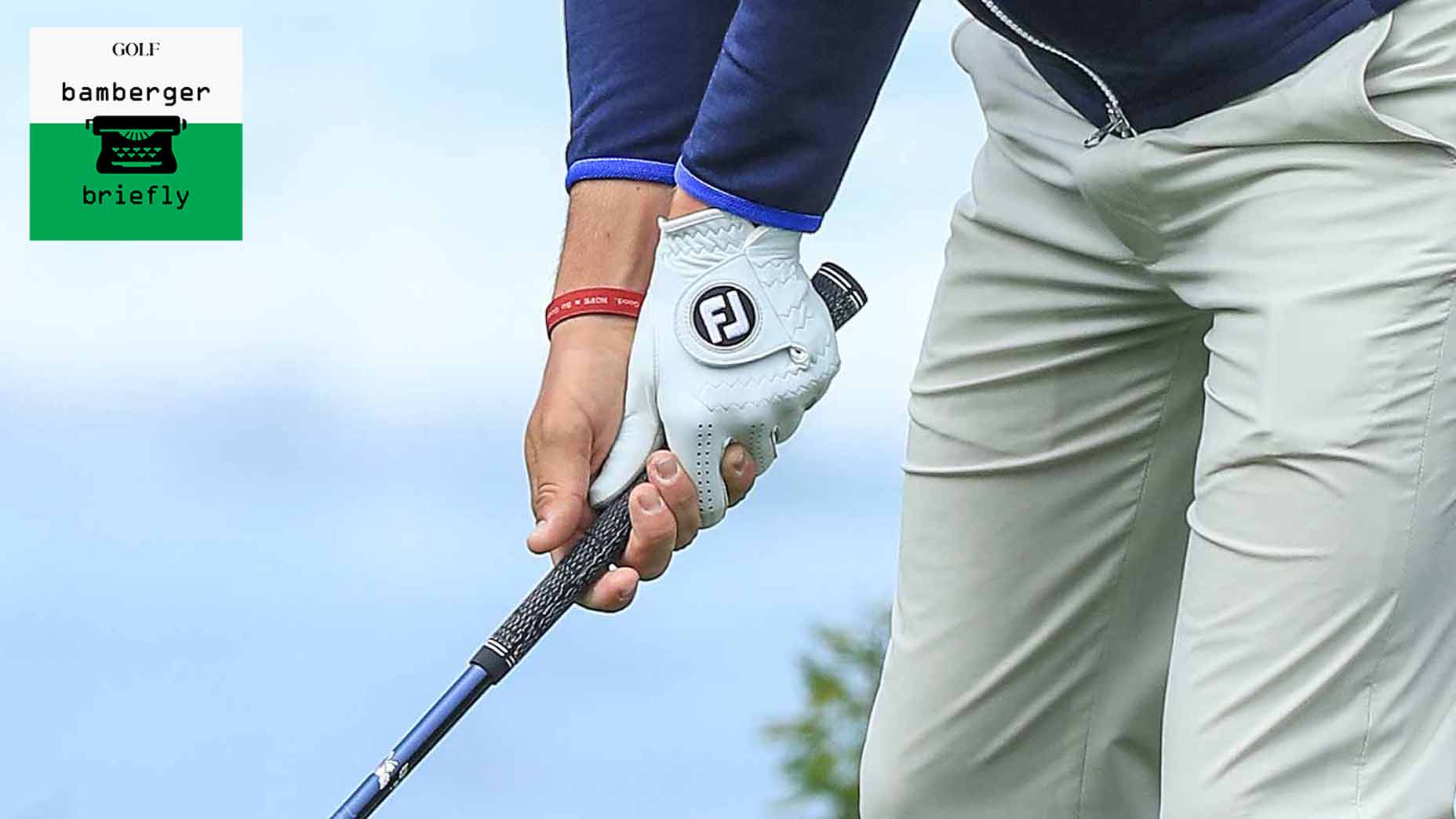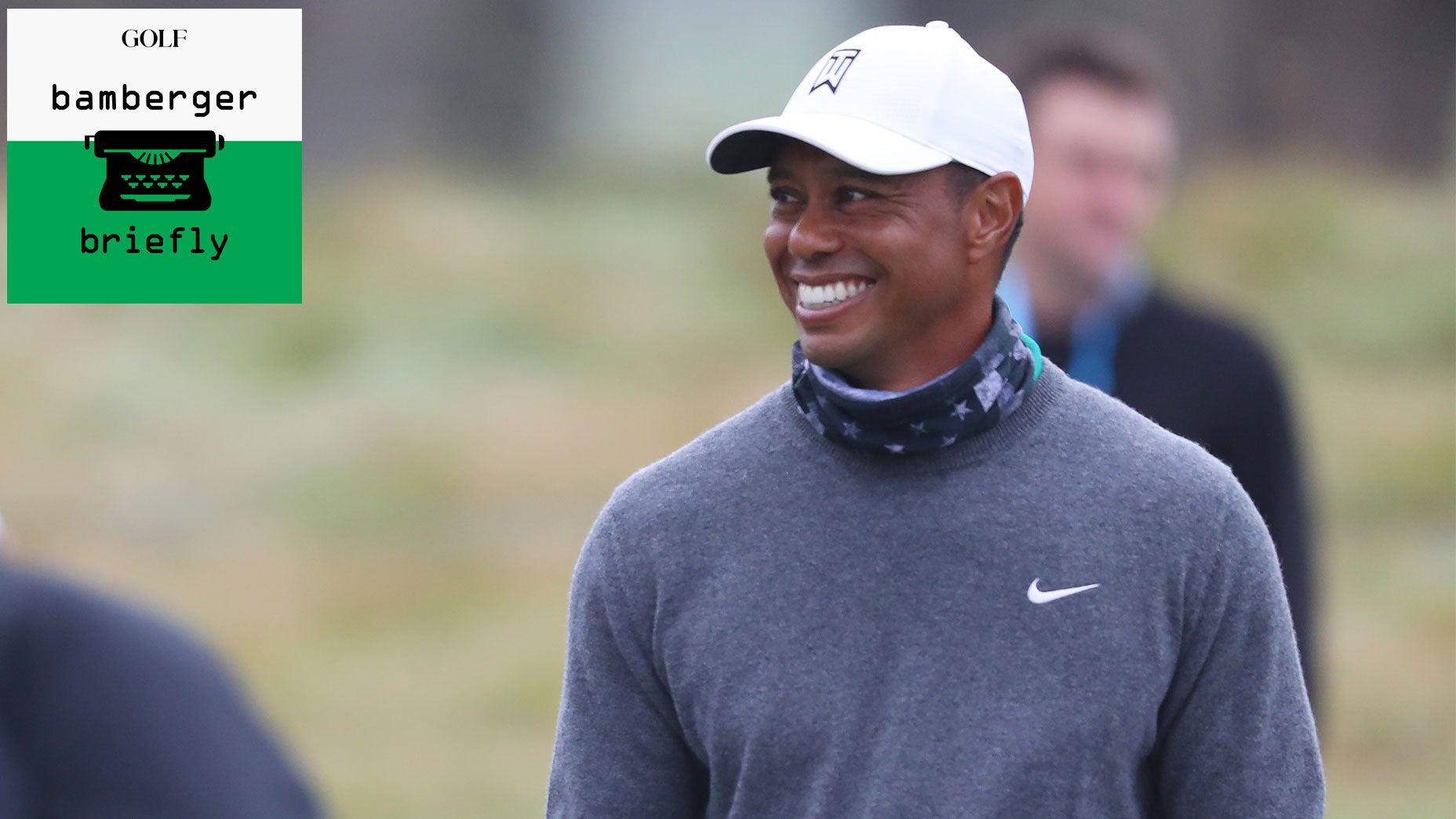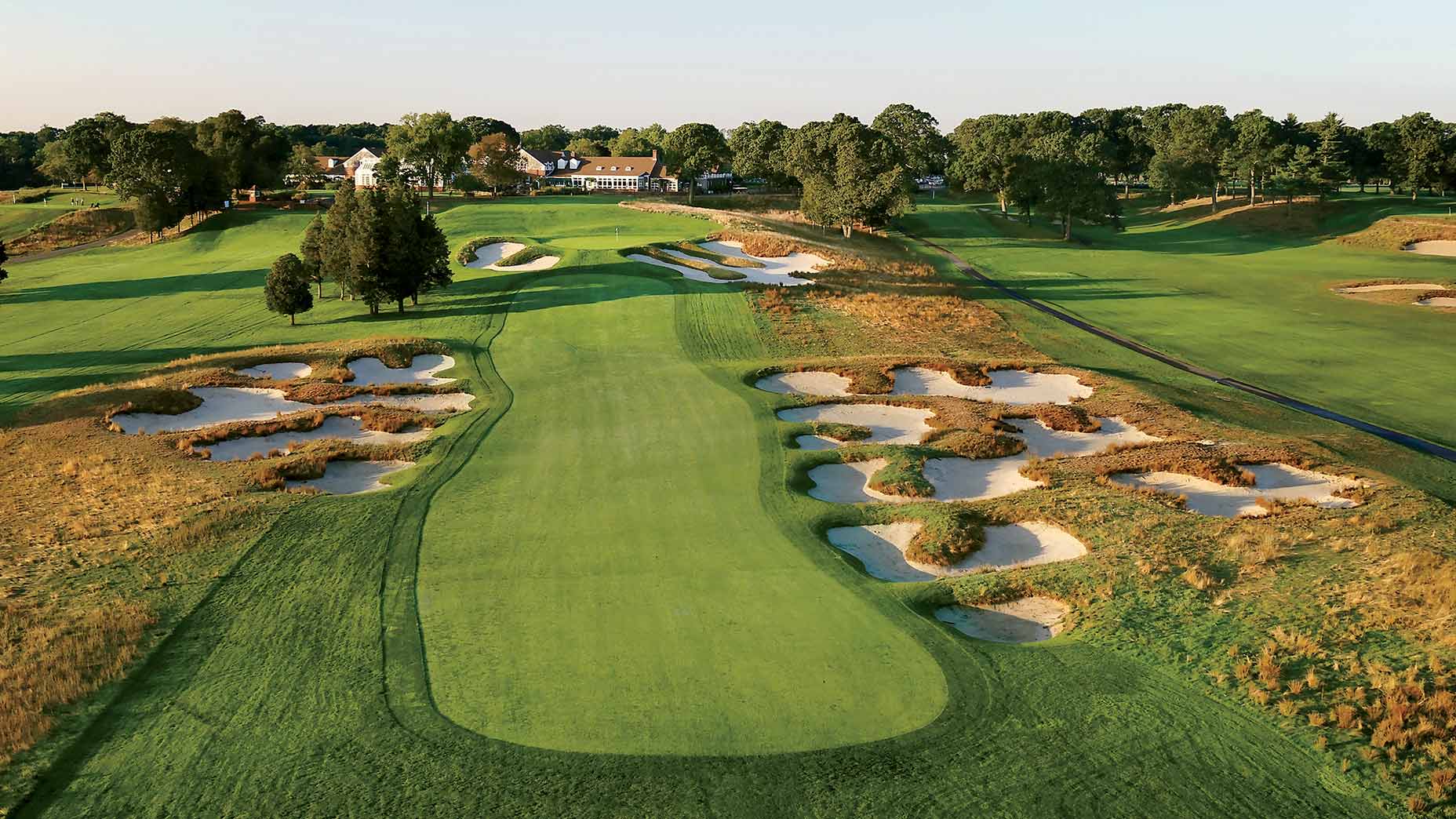Ed. note: We’ve heard the chanting outside our windows, at odd hours of the day and night, so here it is: the third of eight installments of Bamberger Briefly, PGA Championship-style. The first piece, on player-caddie relationships, is here. The second, on Tiger’s memoir, is here.
Seeking to be productive during this pandemic, I’ve been trying to make my grip stronger. I’m not talking Paul Azinger-strong here. Not Fred, either. More like Lucas Glover. He’s my grip hero. Yes, Luke gets style points: Golf without a glove. Still, the man has one sound grip.
When I took up golf, in the mid-1970s, there was really only one grip on the menu. My friend Ricky and I, as middle-schoolers, snuck into an adult-education golf night class. The instructor said that a few golfers with short, stubby fingers, like Jack Nicklaus, used an interlocking grip, but the preferred grip was the overlapping one, named for Harry Vardon. The Vardon Grip. How cool.
Every caddie-player relationship is different but the goal is the same: play good golfBy: Michael Bamberger
Also, everyone knew this chestnut, from Sam Snead: grip the club like you have a little baby bird in your hand. In other words, with a soupçon of firmness. But don’t choke the life out of the poor thing. That’s easier said than done, when your grips are smooth and shiny and old. But the Snead image is a useful one. The theory was that grip pressure is a necessary starting point for a smooth and rhythmic backswing.
How quaint.
Backswings have never been faster and guys have never held the club tighter. I’m not going Brandel Chamblee on you here. I have no numbers. But that’s my observation. Yes, Hubert Green took it back in a flash in the 1970s and ‘80s. Nick Price did the same in the ‘80s and ‘90s. But now there’s Brooks Koepka and Jon Rahm and Justin Thomas and Tony Finau and Matthew Wolff and the rest.
Where have you gone, Al Geiberger?
Al won the ’66 PGA Championship. In 1977, in Memphis, he became the first player to shoot 59 in a Tour event. Everybody wanted to swing like Al. Perfect neutral Vardon grip. Long slow rhythmic backswing. Totally repeatable swing, and seemingly effortless. Gorgeous to look at.
Davis Love followed in that tradition. Payne Stewart and Steve Elkington did, too. What a collection of neutral grips and on-plane rhythmic swings. The swing as art.
RIP.
Today’s equipment, and courses, have changed our approach to the game.
Thus my efforts, these past months, to strengthen my grip and increase clubhead speed, especially on the downswing. (But nobody sleep-walks through the backswing anymore, not on Tour.) I’d like to have more wrist-break at the top of the swing. This is with the driver. I’m not taking it back inside. If I’m a little across the line at the top (the shaft pointing to right field, for a right-handed golfer), that’s OK. Once I’m there, I want to let it rip. I’m no longer even making a nod to a conscious effort to release the clubhead.
I’m not trying to hit pretty, classy draws. I’m trying to hit high fades, the longer the better. I’m trying to hit it hard. I’m going for speed, and why not? I can barely remember the last time I had to chip one out from behind a tree. Find a golf course with trees anymore.
We could learn a lot about Tiger Woods in his new book (if he lets us)By: Michael Bamberger
Thomas uses an interlocking grip. Koepka does, too. So does Rory. So does Tiger. It seems that at the speeds at which they are swinging, interlocking lets you clamp down more. You get that left index finger and right pinkie together like — make-your-own analogy. I can’t interlock, not after all these years. But I’m guessing 20 years from now the Tour will be loaded with interlockers.
In this same general area, my swing speed seems too dependent on my mood. If I’m not in an aggressive mood, or don’t have an aggressive thought, I have no speed. I asked Koepka on Tuesday if he ever needed an aggressive thought to hit it longer than normal.
His answer: “Yeah: ‘Hit it hard.’ That’s the only thought. My mind goes blank. I kind of blackout a little bit, sometimes while we’re out there. I don’t think of swing thoughts. I don’t think of anything.
“I don’t do that in practice, when we’re at home. But out here, I just go out and hit the ball. Whatever shape I’m trying to hit, just see it, go with it and swing it.”
A couple hours later, I asked J. Thomas if the interlocking grip was better for somebody who swings, as he does, really hard. He has more speed going back than some people have going forward.
His answer: “I have never heard that, or thought of that, in my life, until just now. I can’t imagine it makes a difference one way or the other. I have really small hands, so if I had an overlapping grip, I would hit it right more often than not. But I don’t think it makes any difference at all.”
Interesting. I note without judgment that Thomas used the phrase “overlapping grip” and not Vardon Grip. Why would he use the phrase Vardon Grip? Vardon died 83 years ago and the interlocking grip (it says here) is on the rise. The Nicklaus grip, if you will. A grip with a rich past, an exciting present and a promising future.
Michael Bamberger may be reached at Michael_Bamberger@Golf.com












